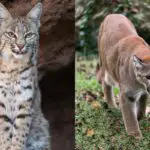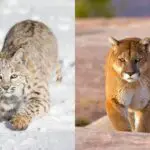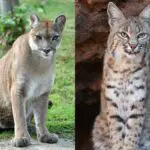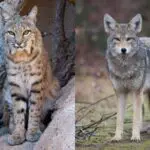Incredible climbers, skilled hunters, and loud, yet elusive, the bobcat is an iconic medium-sized cat found across North America, northern Mexico, and southern Canada. Sporting a uniquely small tail, tufts of hair behind its ears, and surprisingly hairy cheeks, this wild cat isn’t usually that hard to identify.
However, confusing the species with the lynx is a common occurrence. While the main differences might be pretty obvious once you know what you’re looking at, you could easily mistake the two at first glance.
After all, both cats belong to the Lynx genus.
In today’s article, we’re going to develop your understanding of both species of cat.
We’ll do this by showing you the main differences between the bobcat and lynx. We’ll look at the size differences, differences in behaviors, and how each cat’s habitat differs among other things.
If you want to learn more about these incredible species of cat, be sure to stick around!
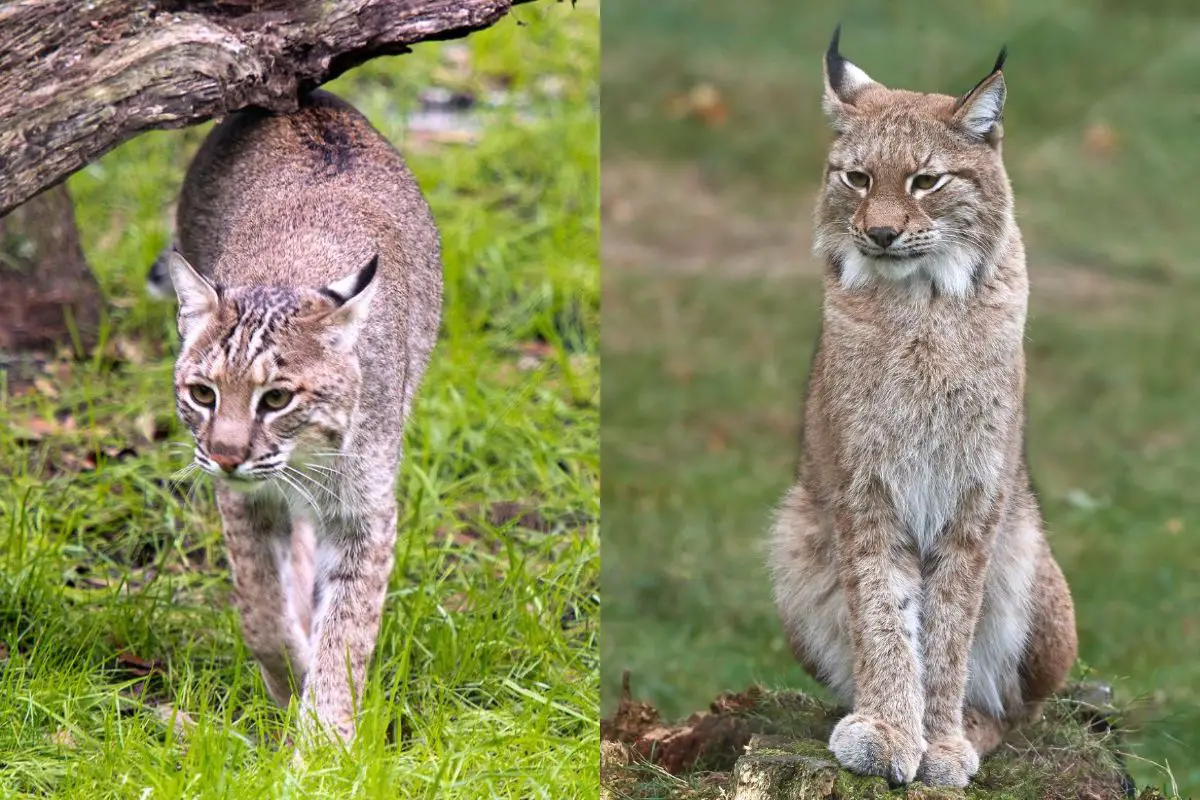
Comparing Bobcat (Red Lynx) Vs Lynx
Before we do anything else, let’s look at a brief comparison of the two species.
Also known as the red lynx, the bobcat actually belongs to the same genus as the lynx.
That genus is referred to as the Lynx genus. Made up of four different species of cat, that means the bobcat is essentially a type of lynx.
As you can imagine, this makes both species quite similar. However, there are some key differences.
While both cats have long legs, tufts behind their ears, short tails, and are medium-sized, the lynx is bigger than the bobcat.
Reaching lengths of 31 to 51 inches, the lynx is almost 10 inches longer than the bobcat.
Weighing up to 64 lbs at its biggest, the lynx can also weigh more than double a fully-sized bobcat.
In terms of where the two species live, the bobcat is mostly found in the United States, southern Canada, and Mexico.
On the other hand, the lynx is most commonly found in Canada, Spain, Asia, and the rest of Europe.
The lynx’s preferred habitat is mountains, forests, and steppes.
The bobcat prefers to inhibit deciduous and coniferous forests, temperate woodlands, wetlands, deserts, mountains, and swamps.
Length
In terms of length, this is where one of the main differences between these two species of wild cat can be found. This is because the lynx is significantly bigger than the bobcat.
On average, a bobcat can reach lengths between 26 and 41 inches. That is roughly double the size of an average domesticated house cat. The lynx tends to be up to 10 inches longer than the bobcat.
An average lynx will grow to reach lengths between 31 and 51 inches long. That means the biggest lynx are approximately 10 inches longer than the biggest bobcat.
Even the smallest lynx will grow to be 5 inches bigger than the smallest bobcat.
Weight
The bobcat and lynx also vary a lot when it comes to their weight. As you can imagine, the lynx is also heavier. Sometimes the difference between the weight of these two cat species can be quite dramatic.
For example, some lynx can weigh up to 64 lbs. This is approximately 34 lbs heavier than the heaviest bobcats, which only weigh 30 lbs.
Typically, a bobcat will weigh anywhere between 11 and 30 lbs. The lynx will grow to weigh anywhere between 18 and 64 lbs.
Habitat
Bobcats and lynx typically live in similar habitats. However, it could be argued that the bobcat is more adaptable when it comes to living in a range of different habitats. The lynx is usually found in forests, mountains, and steppes.
The bobcat is also found in these habitats, but it also has the ability to live in other environments.
For example, aside from forests and mountains, the red lynx can also be found in temperate woodlands, swamps, wetlands, and deserts.
Despite the use of different habitats, bobcats and the lynx are still similar, as they both prefer to live in forested areas when possible.
Geographical Range
Both the lynx and red lynx have an impressive geographical range. In the United States though, the picture looks very different from other parts of the world.
In the U.S, the bobcat has a much bigger geographical range. Found in almost every state, millions of bobcats live all over America.
Unfortunately, the story with the lynx is very different. It is believed that only a few hundred lynx remain in less than 48 lower states.
Apart from the United States, the lynx has a large geographical range. The lynx can be found in Canada, Asia, Spain, and the rest of Europe.
The bobcat isn’t as widespread. The bobcat can only be found in America, Mexico, and Canada.
Body
When it comes to their bodies, the bobcat and lynx are pretty similar. As we mentioned earlier, the bobcat isn’t as long or heavy as the lynx, but apart from that, both species of cat share appearances.
Both the red lynx and lynx have a thick, fluffy coat, tuft ears, hairy cheeks, long legs, short tails, and fairly large paws for their size.
The bobcat and lynx are also both tawny in color with brownish-gray markings.
One other difference between the two species in regard to the body is the soles of their feet. The red lynx has bare soles on its feet. The lynx has padded feet.
Fur Color And Patterns
Making any generalizations about the lynx’s fur color and patterns is quite difficult as it tends to vary. A lynx’s fur can be gray, tan, yellow, or brown. Their color can depend on the time of year.
The bobcat is slightly different. Usually, the bobcat is brown in color, featuring darker black or gray spots and a black-tipped tail.
Despite this difference, it isn’t uncommon for both species to share a similar colored fur.
The bobcat typically has more markings than the Canadian lynx.
The fur patterns of the bobcat and lynx help the cats blend in with their surroundings, making it easier to hunt prey.
Compared to the Canadian lynx, the bobcat also has shorter tufts of hair on its cheeks and ears.
Tails
Unlike most species of cat, the lynx and bobcat are well recognized for their short tails. Short or bobbed, these tails don’t usually grow any longer than 11 inches.
In fact, the bobcat has an even shorter tail. The bob
cat’s tail usually grows between 2 and 7 inches long. Interestingly, the bobcat’s “bobbed tail” is where the species gets its name from.
At 11 inches long, even the biggest species of lynx still only have a short tail. Compared to their larger bodies, this tail can often look quite strange.
Other Types Of Lynx
When comparing the bobcat and lynx, it is important to take other types of lynx into consideration.
While there are four types of lynx that make up the Lynx genus, we also need to think about how the different types of lynx vary from location to location.
For example, the Texas lynx might be very different from the Canada lynx.
On the other hand, some types of lynx might actually be the same type of cat as the bobcat. They might simply be known under a different name.
To give you a better understanding of how the bobcat compares to the lynx, we’ll now look at the different types of lynx too.
Florida Lynx Vs Bobcat
When it comes to comparing the Florida lynx to the bobcat, there is often some confusion. This is because the Florida lynx is actually a type of bobcat.
Not many people realize it, but the name Florida lynx is simply another name used to describe the bobcat species that live throughout Florida.
Usually, the Florida lynx weighs between 15 and 25 lbs, which is pretty average for the bobcat.
However, in terms of size, this type of bobcat has been known to grow much bigger. Some Florida lynx have even been recorded as reaching lengths of 48 inches long.
There are believed to be approximately 300,000 bobcats in Florida.

Canada Lynx Vs Bobcat
There aren’t too many differences between the Canada lynx and bobcat. Both have similar fur, long legs, tuft ears, and a short tail.
However, the Canada lynx is usually a little bit bigger than the bobcat. While both species stand at approximately 2 feet tall, the Canadian lynx is a couple of inches longer and a little heavier.
This species of lynx can weigh up to 60 lbs, which is 30 lbs heavier than the heaviest bobcats.
These differences can be so small though that most people easily confuse the two species for one another.
Arizona Lynx Vs Bobcat
The Arizona lynx is another species of the bobcat. Compared to the average bobcat, they are usually a little bit bigger.
An average adult Arizona lynx will grow up to 30 inches long and weigh up to 30 lbs. This is quite a bit bigger than other types of bobcat that weigh roughly 12 lbs and reach lengths of 26 inches.
Interestingly, there are more Arizona lynx in Arizona than there are mountain lions.
They also tend to have darker fur with darker spots and a brighter underbelly.
Texas Lynx Vs Bobcat
Like the bobcat, the Texas lynx is a medium-sized wild cat species that has a reddish-brown coat.
They are usually a bit bigger than the bobcat, reaching lengths of 43 inches and weighing up to 36 lbs.
Highly adaptable, this species will happily roam through urban areas and feed on squirrels and rabbits.
This is very similar to the bobcat. In fact, apart from their size, there are very few differences between the two.
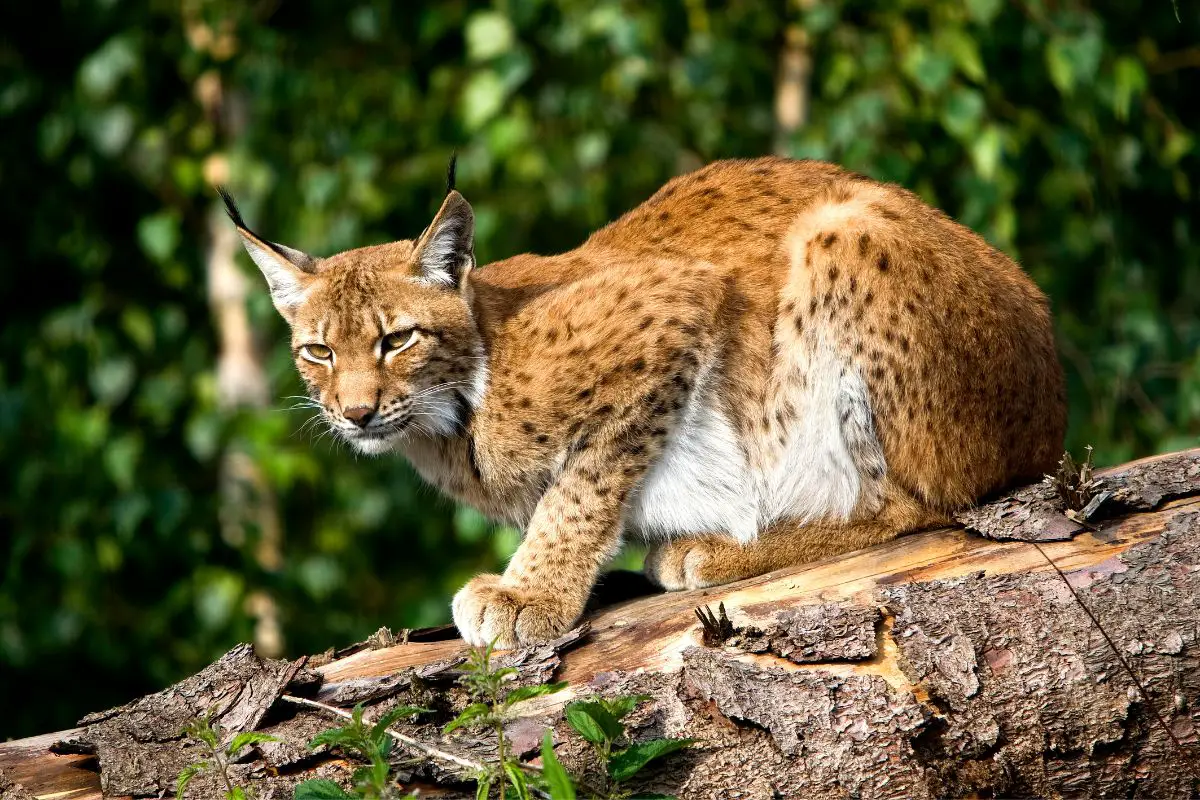
Maine Lynx Vs Bobcat
Maine is one of the only places in the United States where the lynx thrives more than the bobcat.
Due to the colder temperatures in the northwestern sections of Maine, bobcats are usually found elsewhere in the state.
Thanks to their thick fur and well-padded feet, the Maine lynx is more than capable of living in the tougher climate.
Aside from that, both of these species of cat are very similar in size and weight.
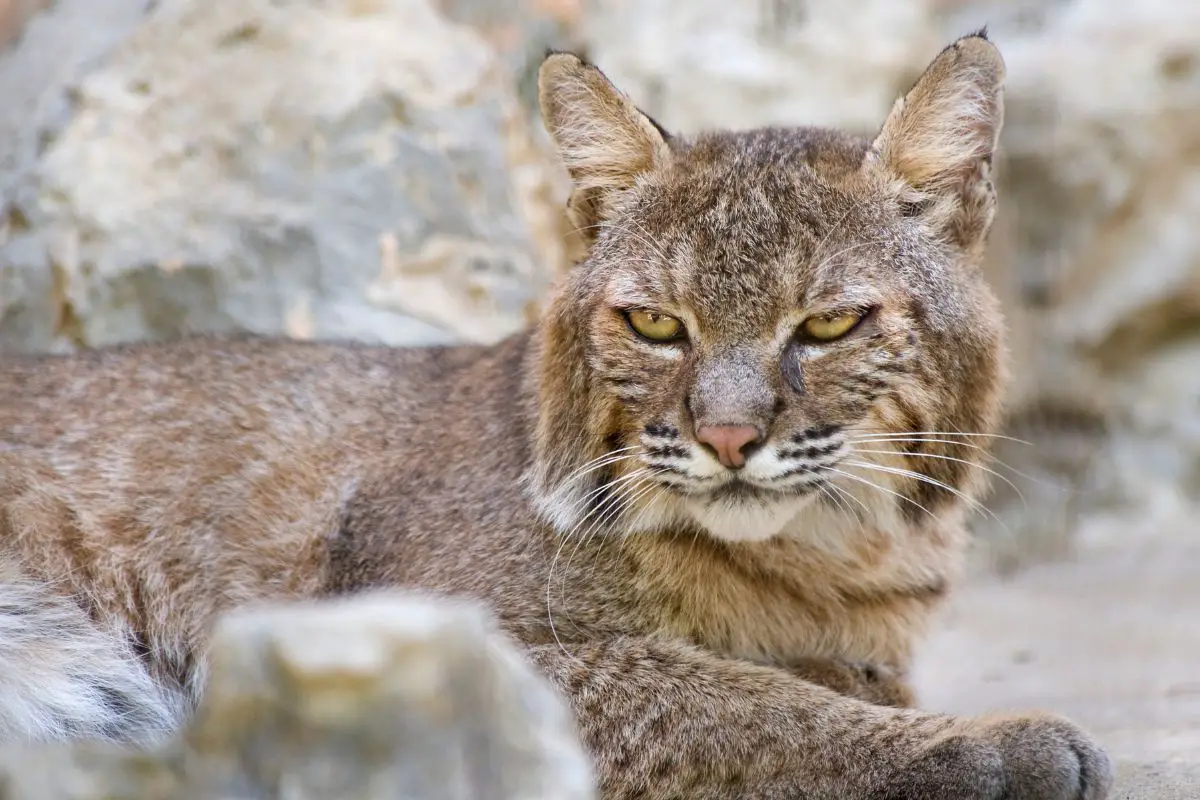
Colorado Lynx Vs Bobcat
The Colorado lynx and bobcat are super easy to mistake for each other as they both have a similar coat, size, weight, and color.
However, you are much more likely to spot a bobcat as the Colorado lynx is much rarer in the Centennial State.
Bobcat Vs Lynx: Who Would Win In A Fight
If a bobcat and lynx were to fight, it’s probably fair to say that it would be an even battle. Both cats are equally as aggressive, fierce, fast, and strong. However, due to their increased size and weight, the lynx is probably more likely to win.
The extra strength would probably be enough to overpower the bobcat.
Final Thoughts
There you have it, all the main differences between the bobcat and lynx. As you can see from this article, there isn’t too much that separates the two species of cat.
Both belong to the Lynx genus, the main difference between the two is size. The lynx is bigger than the bobcat.
Some lynx might weigh a couple of pounds more or grow a couple of
inches longer, while others can weigh significantly more and grow to be much larger.
With similar appearances and behaviors, it isn’t hard to see why so many people confuse the two species for one another.
Hopefully, now you know the difference between the two, you’ll know exactly what you’re looking at if you ever come across either cat.
- Sink Your Teeth Into This: Analyzing the Powerful Lion Bite Force - September 8, 2023
- Siberian Tigers: Everything You Need To Know - September 4, 2023
- Do Lions Eat Humans? Understanding Lion Aggression and Risks - September 4, 2023


